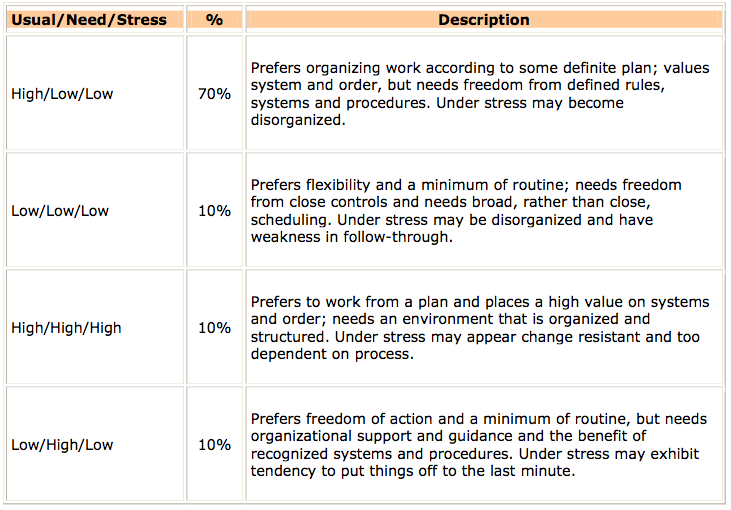
Components: Structure
|
|
|
|
What does Birkman mean by Structure?
The Need for Structure in Planning and Organizing
Following plans, finishing tasks, dealing with detailed tasks, using a systematic approach and their opposites. Flexibility vs. Structure
STRUCTURE relates to organization and orderliness. This Component includes following plans, finishing tasks, dealing with detailed tasks and using a systematic approach.
- High scores reflect orderly, systematic and detail oriented behavior, a preference for planned and controlled tasks and a tendency to become overly constrained by existing plans, procedures or ways of doing things. Stress can result when there are rapid changes of approach, lack of predictability or feelings that tasks are out of control.
- Low scores reflect flexible, adaptable behavior and a preference for new, less planned and more open tasks. Stress can result when there is too much control by others or overly detailed and controlling procedures. Under stress, a person with a low score may become disorganized, disjointed in giving instructions and display “last minute” behavior.
|
Components – Four Possible Patterns
In reviewing any of the Birkman Components, there are four possible patterns that might be generated. We have listed the combinations here for Structure with the approximate percentage of the population that will show each pattern, as well as some narrative descriptions for how to understand these patterns.

Issues impacted by the Structure Component:
- Managing meetings effectively
- Clarity of delegation
- Project management / time management
- Sustaining the system and procedures


